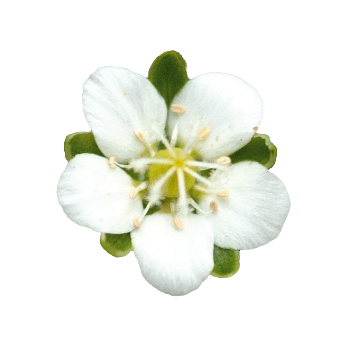

Dubliner
- White starry flowers
- Compact plant habit
- Perfect ground cover and evergreen mat
- Mounded habit is ideal for borders
- Crop Time
- Spring: 13 - 15 weeks
- Height ∅
- 3 ″ / 8 cm
- Exposure
- Sun - Partial shade
- Seed Form
- Raw Seed
- Heat Zone
- undetermined
- Hardiness Zone
- 4-7
- Best Uses
- Bedding, Landscape, Rockery
Culture guide
Usage
Cushion perennials for rock garden and graves, plants for dry stone walls and paving, ornamental leaf plants, ground cover plant.
The optimal pot size is 3,5-5" (9-13 cm).
Sow time
February-March for flowering in pots from June onwards; Mid July-End August for flowering in pots the following year.
Sowing method
3-5 seeds per plug, no cover required. A direct sowing into the final pot is possible.
Germination
The plants germinate in 10-14 days at 65-72 °F (18-22 °C). Light is required for germination.
Growing on
Transplant the plugs after 5-6 weeks. Grow on at 60-65 °F (15-18 °C). Plants prefer cooler growing conditions. Vernalization is not required for flower initiation.
Media
Use a well-drained, growing perennial substrate with 0-15 % clay, 0-20 % parts (e.g. wood fibres, bark, sand, perlite) 1-1,5 kg/m³ complete balanced fertilizer, 0-2 kg/m³ slow release fertilizer (3-9 months), iron-chelate, micronutrients, pH: 5.5-7.0.
Temperature
Grow at 50-59 °F (10-15 °C) or outdoors. Try to lower the temperatures after transplanting step by step to 50 °F (10 °C). In winter indoors frost free at 37-41 °F (3-5 °C) or outdoors using a fleece. The roots should be developed well in the pots. In spring the plants start to grow indoors from end of December onwards for 8-10 weeks at 50-59 °F (10-15 °C). Lower temperatures will increase the cultivation time. Sagina does not like hot temperatures.
Fertilization
Plug culture: Begin fertilizing early once germination is completed. Use a complete balanced fertilizer for youngplants (EC 0,5-0,7)
Growing on: Low to moderate fertilization levels are required (maximum EC of 1.5). Fertilize the crop weekly with 80-100 ppm nitrogen (at 2 kg/m³ slow release fertilizer in substrate), using a complete balanced fertilizer. Avoid high ammonium and high nitrogen levels, otherwise the plants doesn’t stay compact. Don’t fertilize after mid September. In spring fertilize with 80-100 ppm nitrogen, using a potassium balanced fertilizer. Prevent magnesium deficiency by applying magnesium sulphate 1-2 times and in case of iron deficiency apply iron-chelate for 1-2 times.
Stage I Starts with the radicle breaking through the testa. The roots are touching the medium. Ends with fully developed cotyledons.
Stage II Starts from fully developed cotyledons. Ends with the fully developed true leaf or true leaf pair.
Stage III Starts from the fully developed true leaf or true leaf pair and ends with 80% of the young plants being marketable.
Stage IV All young plants are ready for sale and in the process of being hardened off. This stage lasts about 7 days.
The cultural recommendations are based on results from trials conducted under Central European conditions. Different conditions in other parts of the world may lead to deviations in results achieved.
